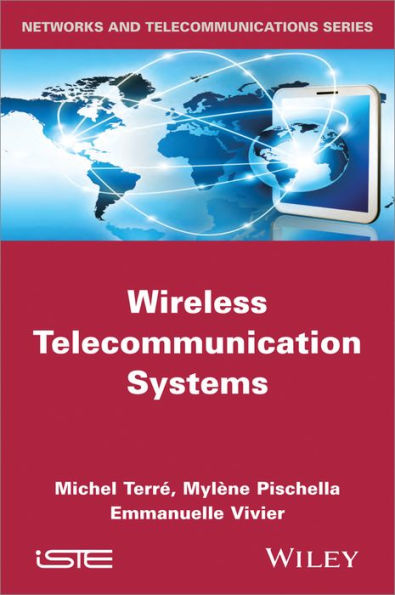Table of Contents
Foreword ix
Preface xi
Chapter 1 Radio Propagation 1
1.1 Free-space loss link budget and capacity 2
1.2 Link budget and free-space loss 7
1.3 Linear expression of the Okumura-Hata model 9
1.4 Frequency, distance and propagation model 11
1.5 Link budget and diffraction 13
1.6 Link budget and refraction 15
1.7 Link budget and diffusion 18
1.8 Frequency and time selectivity 20
1.9 Doppler effect 21
Chapter 2 F/TDMA and GSM 23
2.1 Maximum transmitter–receiver distance 24
2.2 Extended maximum transmitter-receiver distance 26
2.3 Reuse distance, interference reduction factor K and regular pattern 26
2.4 Radio resources dimensioning in GSM 32
2.5 Link budget in an isolated GSM cell 33
2.6 Deployment of a GSM network along a highway 36
2.7 GSM network dimensioning and planning in a rural area 41
2.8 GSM network dimensioning and planning in an urban area 44
2.9 SMS transmission in a GSM network 46
2.10 Frequency reuse pattern determination 48
2.11 Traffic and Erlang for GSM cell dimensioning 50
2.12 Signal to noise plus interference ratio 52
Chapter 3 CDMA and UMTS 59
3.1 Spreading and CDMA 63
3.2 Hadamard spreading codes: a perfect orthogonality between the users? 64
3.3 Relation between Eb/N0 and the reception threshold in UMTS networks 69
3.4 Required number of codes in CDMA 70
3.5 UMTS link budget 71
3.6 Cell breathing in UMTS networks 77
3.7 Intersite distance calculation in UMTS networks for different frequency reuse patterns 80
3.8 Case study in UMTS networks 83
Chapter 4 OFDM and LTE 95
4.1 Useful throughput of an OFDM waveform 96
4.2 OFDM and PAPR 100
4.3 Frequency selectivity and OFDM dimensioning 104
4.4 OFDM dimensioning 106
4.5 OFDM dimensioning for 4G networks and data rate evaluations 107
4.6 LTE data rates evaluation 110
4.7 LTE link budget 113
4.8 LTE link budget taking into account the number of users 120
4.9 Modulation-coding scheme relation, spectral efficiency and SINR in LTE networks 123
Chapter 5 MIMO and Beamforming 129
5.1 Beamforming and signal-to-noise ratio 133
5.2 Space diversity and chi-square distribution 140
5.3 MIMO and capacity 149
Chapter 6 UWB 155
6.1 Impulse UWB 157
6.2 UWB and OFDM 161
6.3 Link budget for UWB transmission 163
Chapter 7 Synchronization 167
7.1 Cramer–Rao bound 168
7.2 Modified Cramer–Rao bound 170
7.3 Constant parameter estimation 170
7.4 Radio burst synchronization 174
7.5 Phase estimation for QPSK modulation 176
Chapter 8 Digital Communications Fundamentals 179
8.1 Review of signal processing for signal—to-noise ratio 179
8.2 Review of digital modulations 179
8.3 Review of equalization 180
8.4 Signal-to-noise ratio estimation 181
8.5 ASK 2 modulation error probability 184
8.6 Spectral occupancy, symbol rate and binary throughput 187
8.7 Comparison of two linear digital modulations 189
8.8 Comparison of two-PSK modulation and power evaluations 191
8.9 Zero-forcing linear equalization 194
8.10 Minimum mean square error linear equalization 196
8.11 Noise factor in equipments 200
8.12 Data rate calculations 203
Chapter 9 Erlang B Tables 205
Bibliography 209
Index 211






